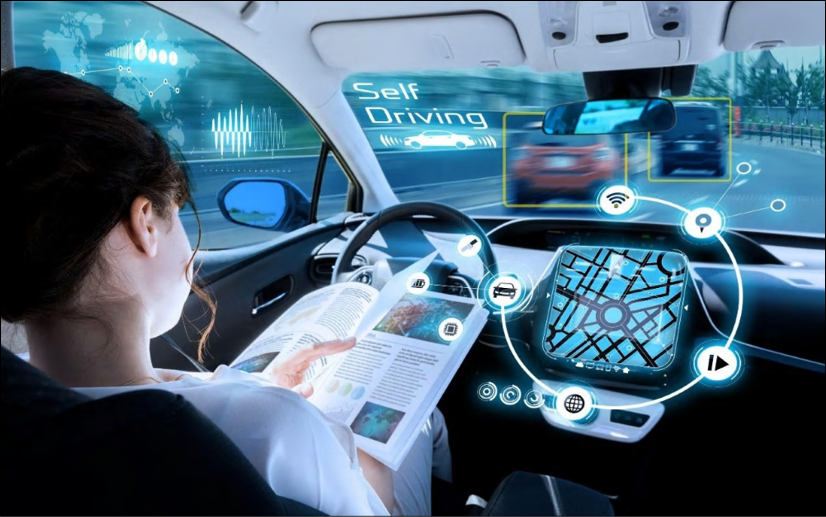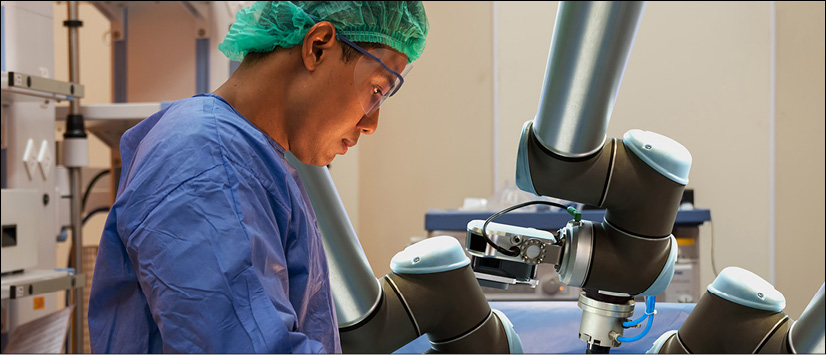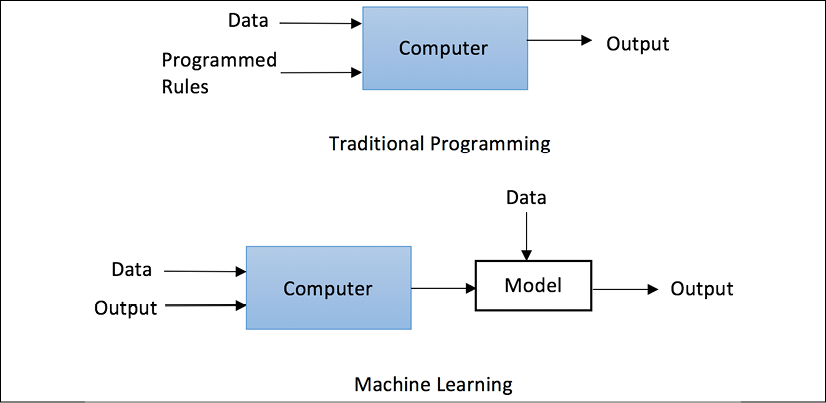An introduction to machine learning
In this first section, we will kick off our machine learning journey with a brief introduction to machine learning, why we need it, how it differs from automation, and how it improves our lives.
Machine learning is a term that was coined around 1960, consisting of two words—machine, which corresponds to a computer, robot, or other device, and learning, which refers to an activity intended to acquire or discover event patterns, which we humans are good at. Interesting examples include facial recognition, translation, responding to emails, and making data-driven business decisions. You will see many more examples throughout this book.
Understanding why we need machine learning
Why do we need machine learning and why do we want a machine to learn the same way as a human? We can look at it from three main perspectives: maintenance, risk mitigation, and advantages.
First and foremost, of course, computers and robots can work 24/7 and don't get tired, need breaks, call in sick, or go on strike. Machines cost a lot less in the long run. Also, for sophisticated problems that involve a variety of huge datasets or complex calculations, it's much more justifiable, not to mention intelligent, to let computers do all of the work. Machines driven by algorithms that are designed by humans are able to learn latent rules and inherent patterns, enabling them to carry out tasks.
Learning machines are better suited than humans for tasks that are routine, repetitive, or tedious. Beyond that, automation by machine learning can mitigate risks caused by fatigue or inattention.
Self-driving cars, as shown in Figure 1.1, are a great example: a vehicle is capable of navigating by sensing its environment and making decisions without human input. Another example is the use of robotic arms in production lines, which are capable of causing a significant reduction in injuries and costs.

Figure 1.1: An example of a self-driving car
Let's assume that humans don't fatigue or we have the resources to hire enough shift workers; would machine learning still have a place? Of course, it would! There are many cases, reported and unreported, where machines perform comparably, or even better, than domain experts. As algorithms are designed to learn from the ground truth, and the best thought-out decisions made by human experts, machines can perform just as well as experts.
In reality, even the best expert makes mistakes. Machines can minimize the chance of making wrong decisions by utilizing collective intelligence from individual experts. A major study that identified that machines are better than doctors at diagnosing certain types of cancer is a proof of this philosophy (https://www.nature.com/articles/d41586-020-00847-2). AlphaGo (https://deepmind.com/research/case-studies/alphago-the-story-so-far) is probably the best-known example of machines beating humans.
Also, it's much more scalable to deploy learning machines than to train individuals to become experts, from the perspective of economic and social barriers. We can distribute thousands of diagnostic devices across the globe within a week, but it's almost impossible to recruit and assign the same number of qualified doctors.
You may argue against this: what if we have sufficient resources and the capacity to hire the best domain experts and later aggregate their opinions—would machine learning still have a place? Probably not (at least right now)—learning machines might not perform better than the joint efforts of the most intelligent humans. However, individuals equipped with learning machines can outperform the best group of experts. This is actually an emerging concept called AI-based assistance or AI plus human intelligence, which advocates for combining the efforts of machines and humans. We can summarize the previous statement in the following inequality:
human + machine learning → most intelligent tireless human ≥ machine learning > human
A medical operation involving robots is one great example of human and machine learning synergy. Figure 1.2 shows robotic arms in an operation room alongside the surgeon:

Figure 1.2: AI-assisted surgery
Differentiating between machine learning and automation
So, does machine learning simply equate to automation that involves the programming and execution of human-crafted or human-curated rule sets? A popular myth says that machine learning is the same as automation because it performs instructive and repetitive tasks and thinks no further. If the answer to that question is yes, why can't we just hire many software programmers and continue programming new rules or extending old rules?
One reason is that defining, maintaining, and updating rules becomes increasingly expensive over time. The number of possible patterns for an activity or event could be enormous and, therefore, exhausting all enumeration isn't practically feasible. It gets even more challenging when it comes to events that are dynamic, ever-changing, or evolving in real time. It's much easier and more efficient to develop learning algorithms that command computers to learn, extract patterns, and to figure things out themselves from abundant data.
The difference between machine learning and traditional programming can be seen in Figure 1.3:

Figure 1.3: Machine learning versus traditional programming
In traditional programming, the computer follows a set of predefined rules to process the input data and produce the outcome. In machine learning, the computer tries to mimic human thinking. It interacts with the input data, expected outcome, and environment, and it derives patterns that are represented by one or more mathematical models. The models are then used to interact with future input data and to generate outcomes. Unlike in automation, the computer in a machine learning setting doesn't receive explicit and instructive coding.
The volume of data is growing exponentially. Nowadays, the floods of textual, audio, image, and video data are hard to fathom. The Internet of Things (IoT) is a recent development of a new kind of Internet, which interconnects everyday devices. The IoT will bring data from household appliances and autonomous cars to the fore. This trend is likely to continue and we will have more data that is generated and processed. Besides the quantity, the quality of data available has kept increasing in the past few years due to cheaper storage. This has empowered the evolution of machine learning algorithms and data-driven solutions.
Machine learning applications
Jack Ma, co-founder of the e-commerce company Alibaba, explained in a speech that IT was the focus of the past 20 years but, for the next 30 years, we will be in the age of data technology (DT) (https://www.alizila.com/jack-ma-dont-fear-smarter-computers/). During the age of IT, companies grew larger and stronger thanks to computer software and infrastructure. Now that businesses in most industries have already gathered enormous amounts of data, it's presently the right time to exploit DT to unlock insights, derive patterns, and boost new business growth. Broadly speaking, machine learning technologies enable businesses to better understand customer behavior, engage with customers, and optimize operations management.
As for us individuals, machine learning technologies are already making our lives better every day. One application of machine learning with which we're all familiar is spam email filtering. Another is online advertising, where adverts are served automatically based on information advertisers have collected about us. Stay tuned for the next few chapters, where you will learn how to develop algorithms for solving these two problems and more.
A search engine is an application of machine learning we can't imagine living without. It involves information retrieval, which parses what we look for, queries related top records, and applies contextual ranking and personalized ranking, which sorts pages by topical relevance and user preference. E-commerce and media companies have been at the forefront of employing recommendation systems, which help customers to find products, services, and articles faster.
The application of machine learning is boundless and we just keep hearing new examples everyday: credit card fraud detection, presidential election prediction, instant speech translation, and robo advisors—you name it!
In the 1983 War Games movie, a computer made life-and-death decisions that could have resulted in World War III. As far as we know, technology wasn't able to pull off such feats at the time. However, in 1997, the Deep Blue supercomputer did manage to beat a world chess champion (https://en.wikipedia.org/wiki/Deep_Blue_(chess_computer)). In 2005, a Stanford self-driving car drove by itself for more than 130 miles in a desert (https://en.wikipedia.org/wiki/DARPA_Grand_Challenge_(2005)). In 2007, the car of another team drove through regular urban traffic for more than 60 miles (https://en.wikipedia.org/wiki/DARPA_Grand_Challenge_(2007)). In 2011, the Watson computer won a quiz against human opponents (https://en.wikipedia.org/wiki/Watson_(computer)). As mentioned earlier, the AlphaGo program beat one of the best Go players in the world in 2016. If we assume that computer hardware is the limiting factor, then we can try to extrapolate into the future. A famous American inventor and futurist Ray Kurzweil did just that and, according to him, we can expect human-level intelligence around 2029. What's next?
Can't wait to launch your own machine learning journey? Let's start with the prerequisites, and the basic types of machine learning.


























































